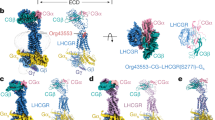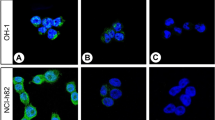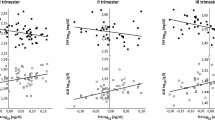Abstract
A urinary gonadotrophin peptide (UGP) was isolated and purified from semi-purified human chorionic gonadotrophin (hCG), prepared from pregnancy urine. The peptide showed hCG-B subunit activity and no hCG-alpha subunit activity as demonstrated by binding studies with the relevant antibodies. It had a molecular weight significantly less than hCG-B subunit. The peptide was linked to thyroglobulin and this conjugate used to immunise rabbits and mice. A radioimmunoassay (RIA) using 125I-UGP and the rabbit antiserum (AK12) was used to monitor chromatographed urine fractions from patients with ovarian carcinoma, seminoma and hydatidiform mole. UGP was also found in the urine extract of a healthy male, but at a much lower level. In each case the UGP detected had the same molecular weight as the pregnancy preparation and appeared to be the main gonadotrophin constituent in those urine samples. Initial immunohistochemical screening of normal and neoplastic tissues with the rabbit antibody (AK12) showed reactivity with some tumours including carcinomas of the lung, ovary, cervix and breast as well as trophoblastic and germ cell tumours. Reactions with non-neoplastic tissues were confined to some specialised epithelia and macrophage populations. A more comprehensive immunohistochemical study was made using a monoclonal antibody to UGP (2C2), with a monoclonal antibody to conformational hCG (INN 13) and another monoclonal antibody to free B subunit (1E5) as controls. Similar patterns of reactivity were produced by the AK12 and 2C2 antibodies in both neoplastic and non-neoplastic tissues. Additional tissues were investigated with the three monoclonal antibodies. The 2C2 antibody reacted with 93% (77/83) of tumours examined; the INN 13 antibody reacted with only the syncytiotrophoblast cells of choriocarcinoma, hydatidiform mole, placental site trophoblastic tumour, and in one case of seminoma; the 1E5 reactivity was confined to only choriocarcinoma syncytiotrophoblast cells.
This is a preview of subscription content, access via your institution
Access options
Subscribe to this journal
Receive 24 print issues and online access
$259.00 per year
only $10.79 per issue
Buy this article
- Purchase on Springer Link
- Instant access to full article PDF
Prices may be subject to local taxes which are calculated during checkout
Similar content being viewed by others
Author information
Authors and Affiliations
Rights and permissions
About this article
Cite this article
Kardana, A., Taylor, M., Southall, P. et al. Urinary gonadotrophin peptide – isolation and purification, and its immunohistochemical distribution in normal and neoplastic tissues. Br J Cancer 58, 281–286 (1988). https://doi.org/10.1038/bjc.1988.204
Issue Date:
DOI: https://doi.org/10.1038/bjc.1988.204



